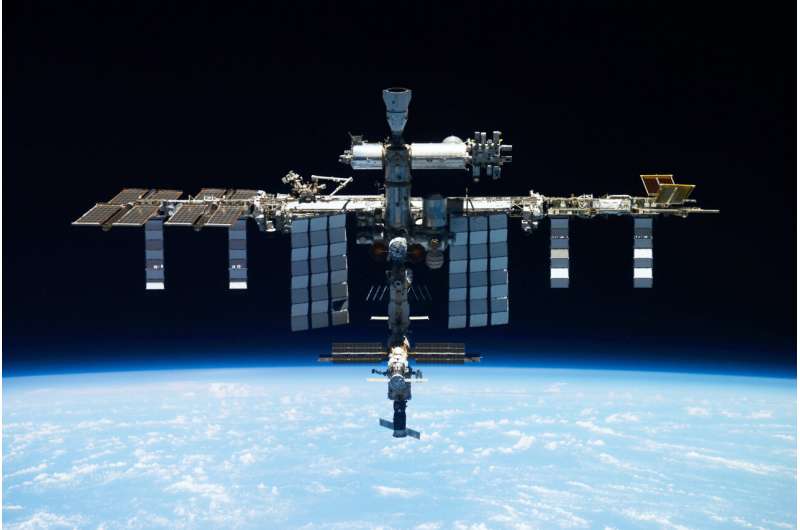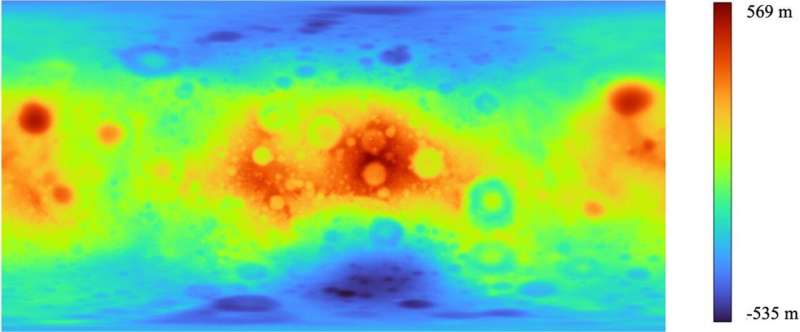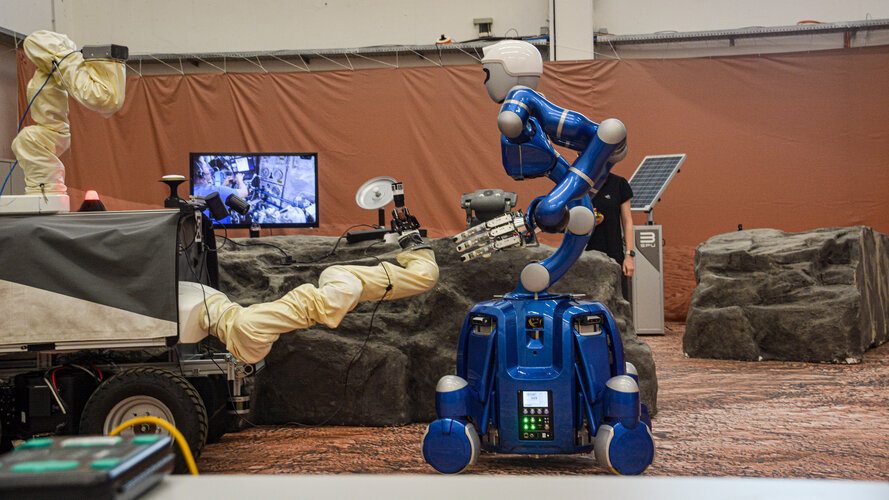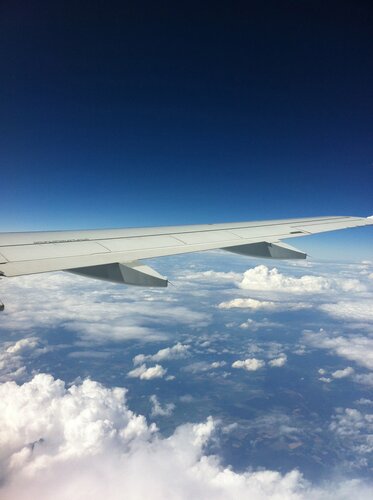Spire to devise GNSS-independent aircraft tracking satellites for ESA
Tuesday, 25 July 2023 20:47
A Spire Global-led group has won European Space Agency funds to develop a satellite to demonstrate a civil aviation tracking constellation that would not rely on GPS, or any other global navigation satellite system vulnerable to interference.
NASA power outage temporarily halts contact with space station
Tuesday, 25 July 2023 19:53
A NASA power outage disrupted communication between Mission Control and the International Space Station on Tuesday.
Mission Control couldn't send commands to the station and talk with the seven astronauts in orbit. The power outage hit as upgrade work was underway in the building at Houston's Johnson Space Center.
Space station program manager Joel Montalbano said neither the astronauts nor station were ever in any danger and that backup control systems took over within 90 minutes.
An 800-year-old mathematical trick could help with lunar navigation
Tuesday, 25 July 2023 19:34
Kamilla Cziráki, a geophysics student at the Faculty of Science of Eötvös Loránd University (ELTE), has taken a new approach to researching the navigation systems that can be used on the surface of the moon to plan future journeys.
Working with Professor Gábor Timár, head of the Department of Geophysics and Space Sciences, Cziráki calculated the parameters used in the Earth's GPS system for the moon using the method of mathematician Fibonacci, who lived 800 years ago. Their findings have been published in the journal Acta Geodaetica et Geophysica.
Now, as humanity prepares to return to the moon after half a century, the focus is on possible methods of lunar navigation.
If you’re going to the south pole, go to the south pole
Tuesday, 25 July 2023 17:28
NASA has been planning for years to go to the south pole of the moon, and that is where it should go.
Space Force selects vendors for low Earth orbit satellite services
Tuesday, 25 July 2023 17:00
The U.S. Space Force announced July 24 it selected 16 companies that will compete for low Earth orbit satellite services contracts.
NASA selects companies to advance lunar power and other technologies
Tuesday, 25 July 2023 14:59
Companies working on nuclear and solar power systems for the moon are among the winners of NASA awards to advance their technologies for future use by NASA and commercial customers.
Space Force to further define details of a ‘commercial space reserve’
Tuesday, 25 July 2023 14:39
The Space Force is moving forward with plans to establish a commercial space reserve to ensure the U.S.
Orbiting astronaut oversees robot team on Earth
Tuesday, 25 July 2023 13:55
Astronaut Frank Rubio aboard the International Space Station collaborated with a small team of robots on Earth to accomplish a complex task – a first test of a new approach to combine human and robotic capabilities for our return to the Moon and beyond.
Varda waiting on FAA license to return space manufacturing capsule
Tuesday, 25 July 2023 09:42
A startup that launched its first mission to test space manufacturing technologies last month is waiting on a Federal Aviation Administration license to be able to bring what it produced back to Earth.
Advanced aircraft tracking will come live from space
Tuesday, 25 July 2023 08:53
Satellites will soon be used to keep an independent eye on airborne planes, under a deal agreed between ESA and Spire Global, a company that provides space-based data, analytics and space services.
From AI to Nuclear: UK launches Strategic Plan for Future Space Exploration
Tuesday, 25 July 2023 08:37 Following a close consultation with the space sector, the UK Space Agency recently unveiled the Space Exploration Technology Roadmap, a strategic guide that will shape the direction of research, development, and funding allocation for the next ten years. The plan anticipates working closely with key international partners, including NASA, the European Space Agency, and JAXA (Japan's space agency
Following a close consultation with the space sector, the UK Space Agency recently unveiled the Space Exploration Technology Roadmap, a strategic guide that will shape the direction of research, development, and funding allocation for the next ten years. The plan anticipates working closely with key international partners, including NASA, the European Space Agency, and JAXA (Japan's space agency Tracing Ryugu's Anhydrous Lineage: A connection to outer protoplanetary disk
Tuesday, 25 July 2023 08:37 The cosmic lineage of the second-generation carbonaceous asteroid Ryugu can be traced back to a distant past and a far-flung location in our solar system, according to recent studies on the space rock's anhydrous minerals. The infrared spectra of these grains provide a link between the initial reservoirs, from which Ryugu's progenitor arose, and those that birthed primitive asteroids and comets
The cosmic lineage of the second-generation carbonaceous asteroid Ryugu can be traced back to a distant past and a far-flung location in our solar system, according to recent studies on the space rock's anhydrous minerals. The infrared spectra of these grains provide a link between the initial reservoirs, from which Ryugu's progenitor arose, and those that birthed primitive asteroids and comets The Stickiness Dilemma: Size plays a pivotal role in cosmic dust adhesion
Tuesday, 25 July 2023 08:37 Size matters when it comes to the formation of planets from cosmic dust, according to a team of astrophysicists from Tohoku University. The researchers' simulations found that the larger the dust aggregate, the less likely it is to stick together following a collision, an observation that may have significant implications for our understanding of planetary evolution.
The formation of new p
Size matters when it comes to the formation of planets from cosmic dust, according to a team of astrophysicists from Tohoku University. The researchers' simulations found that the larger the dust aggregate, the less likely it is to stick together following a collision, an observation that may have significant implications for our understanding of planetary evolution.
The formation of new p Groundbreaking 3D-Printed frictionless gear for space applications
Tuesday, 25 July 2023 08:37 Space equipment is no stranger to being described as "alien artwork", but the latest development from the Swiss team at CSEM, in collaboration with 3D Precision SA and Almatech SA, can rightly earn that moniker. The cutting-edge design they've produced is a unique 3D-printed gear mechanism, one that stands to revolutionize the functionality of critical space instruments. With a construction that
Space equipment is no stranger to being described as "alien artwork", but the latest development from the Swiss team at CSEM, in collaboration with 3D Precision SA and Almatech SA, can rightly earn that moniker. The cutting-edge design they've produced is a unique 3D-printed gear mechanism, one that stands to revolutionize the functionality of critical space instruments. With a construction that Potential earthquake precursor discovered through GPS measurements
Tuesday, 25 July 2023 08:37 In a significant development in the field of earthquake prediction, a study by the Paris Institute of Planetary Physics suggests that a noticeable stage of fault slip can occur two hours before significant earthquakes. The analysis, which evaluated Global Positioning System (GPS) time-series data from almost 100 large-scale seismic events worldwide, provides evidence for this groundbreaking hypo
In a significant development in the field of earthquake prediction, a study by the Paris Institute of Planetary Physics suggests that a noticeable stage of fault slip can occur two hours before significant earthquakes. The analysis, which evaluated Global Positioning System (GPS) time-series data from almost 100 large-scale seismic events worldwide, provides evidence for this groundbreaking hypo 
